3 types of convectors for heating a private house: choosing a device that heats efficiently and safely
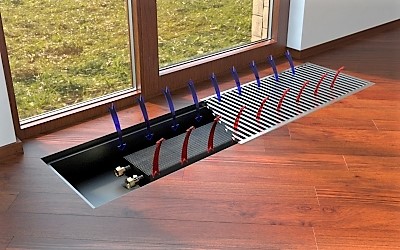
Every owner wants to create comfortable living conditions in his home. There are many options for effective heating. air to the required temperature.
Selection of heating units is determined by the geometry of the heated room, the volume of air and the amount of invested funds.
The room is being heated according to the rule of convection, when the air space is heated by the elements of the device and creates natural circulation – continuous flow of heated air.
Content
How to heat a country cottage? Convector device
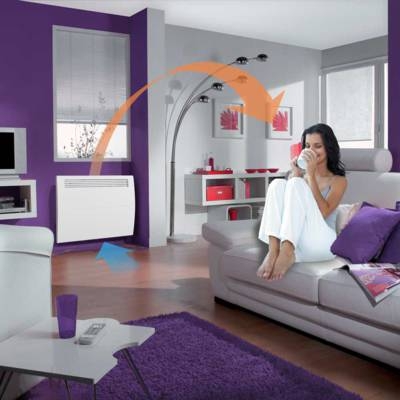
The flow speed and temperature depend on the power equipment, its operating principle and the size of the heated room. The bodies have different shapes, but the operating principle is the same for everyone.
The flow enters the heated fins (blades) through the inlet channels. The heat exchange process occurs. The air mass continuously circulates through the heating element., heats up and spreads throughout the entire volume of space.
The peculiarity of the unit's operation lies in its design and the heat transfer elements used. three groups convectors:
- water;
- gas;
- electrical.
Reference. The fastest way to warm up is electricHeating and air circulation begin immediately after the device is connected to the network.
Acceptable model design with a combined method, but in practice it is rarely encountered.
The operating principle of various types of convectors for heating a private house
From the type of design and operating principle of the equipment the speed of heating the room depends. The power of the device, the total area and the number of ribs in contact with air masses directly affect. The operation of the heat exchanger is based on the energy conversion method.
Peculiarities. Convectors are often additionally equipped with fan, which provides forced air circulation.
Water
The design consists of heat exchanger available, which is arranged in a simple way. Metal plates are located on the central pressure pipe. Heated liquid circulates through the pipe.
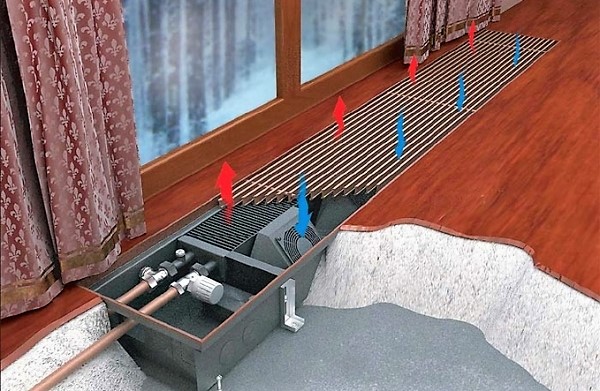
Photo 1. Water heating convector built into the floor. Pipes through which hot liquid flows are connected to the device.
From the total cross-sectional area metal plates, the rate of heat transfer depends into the surrounding air.
Advice. When choosing a device with a water principle of operation - make sure the quality of the connecting elements, which are made of stainless steel or brass alloys.
Electric type
The distinctive feature of these devices is simplicity of design and quick start-up. They are manufactured as portable equipment. They are distinguished by:
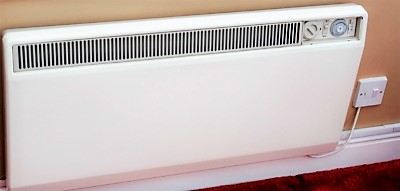
- dimensions;
- design;
- method of attachment to the surface;
- power of the heating element.
There is an electric heating element inside the housing in a sealed shell. The frame has special perforated holes for the inflow and outflow of air mass.
Important! The body is designed in compliance with all fire safety rules.
On the front surface is installed control panel temperature. Method of regulation - electronic, mechanical or combined. The electronic board is equipped with microcontroller and automatic overheating protection.
Gas
The distinctive feature of the equipment is its work on natural fuel (liquefied gas)In the combustion chamber, the process of fuel ignition occurs, releasing a large amount of thermal energy.
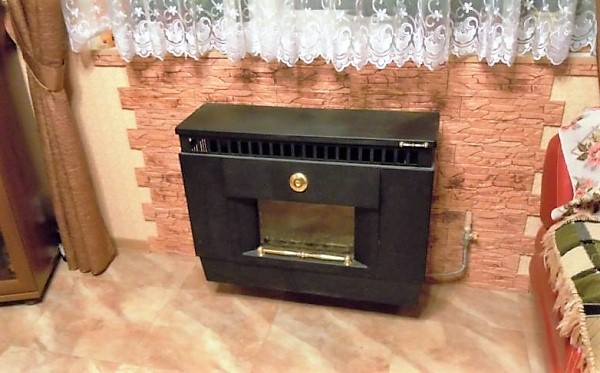
Photo 2. Gas convector FEG Zeus GF35F is a fairly massive device, mounted on the wall under the window.
Design is installed in a specific place without the ability to move quickly. Provides for the presence of coaxial tube - chimney.
Carefully! Installation of a gas convector not produced in-house. Specialists install the device with the permission of the relevant control authorities.
Advantages of convector heating of a wooden or frame house
- equipment safely for installation in any type of premises;
- supplied system from overheating;
- there is no need for constant monitoring;
- the design provides for ease of operation and installation apparatus.
Comparison of a convector and an electric boiler
Electric boiler and convector work on a similar principle actions. The device contains a heating element that converts electricity into heat.
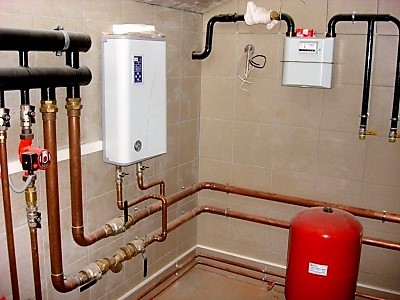
Thermal energy released warms up the air masses by transferring it through a heating unit. Connects to an electric boiler pipe system, through which heated liquid circulates.
At certain intervals the pipes are mounted heat dissipation radiators. To operate the boiler you will need installation of special pipelineThe design principle is similar to a gas convector, but does not include a chimney.
Compared to an electric convector - long installation and complicated startup process to work. Essential differences in size and design devices. The electric boiler is mounted for long-term heating, and the convector allows temporary heating of the room.
How to choose? Features to look out for
The heating equipment market offers: easy to install and reliable to operate, devices with different operating principles – heating convectors.
Power
Technical and residential premises have different geometry of the structure. Based on the height of the ceilings and the area of the room, they produce calculation of the volume of the space to be heated.
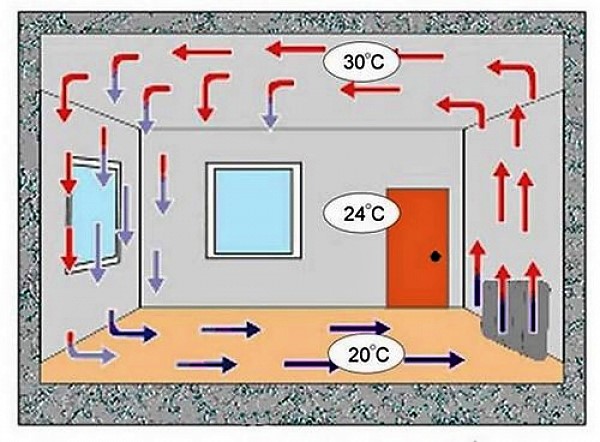
Photo 3. When calculating the required power of the device, take into account the features of air circulation in the room: the temperature near the floor will be slightly lower.
They take it into account the presence of windows, thermal conductivity of the walls and ventilation method premises. The required power of the convector is calculated based on these characteristics.
Carefully! Old wiring made of aluminum cores can oxidize and lead to short circuit.
Energy consumption and quality of electrical wiring in a country house
The powerful device creates load on the power grid. Increased electricity consumption will be reflected in the financial part - utility bills.
Advice. Make sure as electrical wiring and its capacity for a powerful electric convector.
Increased load on the wires will cause them to heat up. The total power of the connected equipment can exceed the permissible limit on the electricity meter. This will lead to regular knocking out corks. The selection of a convector is carried out taking into account these nuances.
Type of fastening, installation and assembly
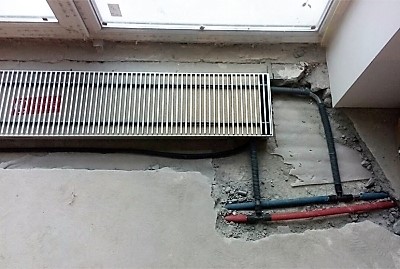
It depends on the type of device indoor location.
Small portable Convectors are convenient to use for temporary heating in any room.
Complex the equipment is being installed in a special placeThe dimensions of the structure, operating principle and mounting method are taken into account.
Useful video
Watch the video to learn why in some cases it is more convenient to heat your home using convectors, while in others it is worth choosing an electric boiler.
Selection according to your needs
Convectors have different completeness. Equipped with a control panel, mechanical and electronic thermostat. In small-sized The designs provide for rollover protection. The perforated air vents are positioned differently to allow air circulation.
The devices are significantly differ in weight and dimensions. are being manufactured with different degrees of protection of the case (IP) - for dry and damp premises. The reliability and efficiency of the equipment has been appreciated by many private property owners. Wide range of models allows you to select the necessary convector for your needs.







Comments
We finally settled on the electric Electrolux ECH/R-2000 E. And first of all, because of its aesthetic design - the convector looks like regular batteries, and it is convenient to place it on the wall under the windowsill.
It works very quietly, noiselessly, heats up almost immediately, it is convenient that you can regulate the temperature yourself, setting the one that is necessary for this particular room. We are happy with the purchase, thanks to the site for detailed explanations.